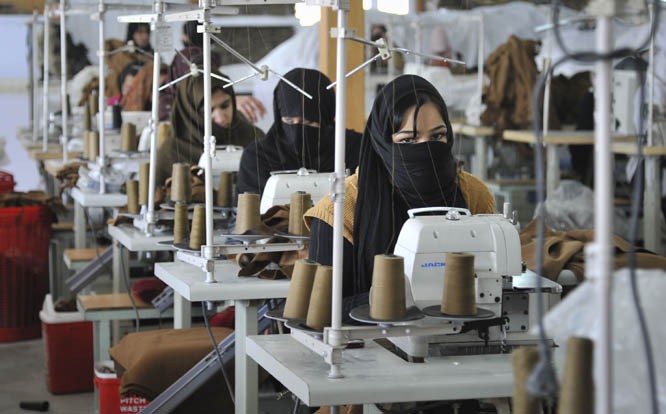
For a law to act as a deterrent against harassment of women at workplace, it has to coincide with a change in social attitudes

Gender disparity in any form stems from the patriarchal mindset, which replicates in everyday scenario and over the years has been systematically embedded in the law. This is glaringly seen more so in its imbalanced implementation. This fundamental flaw flourishes and is embraced shamelessly by our society in cases of violence against women. Over the years many international reports such as that of the ADB and World Bank have arduously outlined that a painful 40 per cent of women having university degree do not work as their male counterpart don’t permit, while the rest either cannot find a suitable, secure job or willingly want to stay at home.
Constraints that hinder inclusion of women in the labour force are both social and cultural in nature. Access to education for a girl child in rural and urban Pakistan is severely dependent upon the "yes" of the man of the house. The result of lack of access to formal and informal education is a source of ailment and leads to a woman not having a voice. Such cultural mindset plaguing our society needs be catered by the government-led initiatives especially in the rural Pakistan by leading capacity building programmes on providing awareness to parents of the girl child specifically.
Sexual harassment at workplace is another poignant issue. We have laws on paper -- for example Pakistan Criminal Penal Code and the Protection Against Harassment of Women at the Workplace Act of 2010 and we are even signatories to Convention on the Elimination of All Forms of Discrimination Against Women (CEDAW) and International Labour Organisation (ILO). However, till date we still do not specifically have a law regarding discrimination of women in workplace.
Having equality on paper does not secure equality in reality. The Protection Against Harassment of Women at the Workplace Act of 2010 describes harassment and the process of reporting it, however it forgets that not every harassment is sexual in nature hence is restrictive in nature. Furthermore, the law fails to address the issue of where the colleagues end up protecting male perpetrators during investigations, especially those in position of power. This legal loophole makes it an automatic barrier and constraints for any means of redress.
In my working career, I have observed that women face another major constraint: mobility, which essentially is the lack of access to transportation. Many who reached offices were either chauffeur driven or chose not to drive themselves. Those who did not have the luxury of a car hesitantly used the public transport, which was and is still uncomfortable. We need to have a mobilising environment for women to have access to safe transportation. This applies to all types of workforce working at the lower and higher post. The private sector organisations can aid this process by providing "inclusivity enablers" such as pick and drop service, day care and flexible working options.
In today’s time, a women and even a girl child mobility is under threat by harassers on the streets. While the government-led "safe cities" pilot project under the UN initiative was a step in right direction, its proactive implementation was still not widespread.
I believe that every initiative needs to be met with gender sensitisation workshops and campaign whereby the male drivers of buses/metro are made aware of their roles in ensuring safety of women passenger. Access to equal opportunities will change the mindset and decrease the misogynist behaviour in buses and on the street.
When Careem was hit by allegations of harassments two years ago, the future recruitment of drivers in Uber and Careem were provided sexual harassment seminars as part of policy to sensitise them as part of service delivery. Thus, at a large scale similar policy can be part of the government-led initiatives. Women lawyers can lead such trainings as they can provide scenario based practical examples for better implementation of laws.
For a law to act as a deterrent, it has to coincide with a change in social attitudes in Pakistan. Sexual harassment and rape is prevalent in the South Asian society due to unequal gender roles, lack of support from men and women alike and an enabling environment.